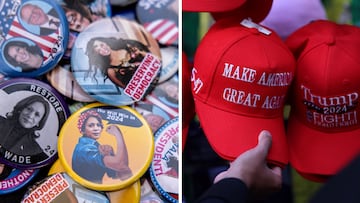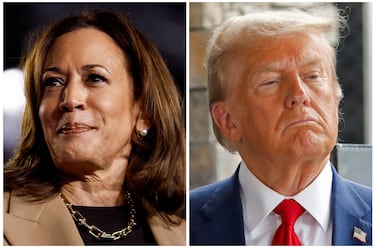Why Republicans are elephants and Democrats are donkeys: The curious story behind the symbols of each party
The animal mascots that represent the Democrats and Republicans were created over a century ago with color-coding scheme a modern invention.


Two animals take centre stage in the USA every four years as the Republican and Democratic political parties battle it out in the US Presidential elections with the 2024 edition set to be a closely contested affair as both Kamala Harris and Donald Trump loom to become the 47th US President with Trump holding the position from 2017-2021.
Follow AS’s live coverage of Election Day and the count in swing states
- Pennsylvania US Election Results 2024 live
- Wisconsin US Election Results 2024 live
- Georgia US Election Results 2024 live
- Nevada US Election Results 2024 live
- Michigan US Election Results 2024 live
- North Carolina US Election Results 2024 live
- Arizona US Election Results 2024 live

It’s Republican ‘elephants’ against Democratic ‘donkeys’.
Although no crystal clear reason has been given for the animal associations, it is thought that the Republican elephant was first used in an Illinois newspaper back in the 1860 presidential election campaign during the the time of Abraham Lincoln. By the end of the 19th century both the Republican elephant and the Democrat donkey were firmly associated with the parties thanks to their use in cartoons in large circulation newspapers.
Our dedicated volunteers showed up across Kentucky today to knock on doors. Strong momentum going into Election Day! Sign up to volunteer here: https://t.co/PgdolrSzDC pic.twitter.com/xRUqspC9GX
— Republican Party of Kentucky (@KYGOP) October 19, 2024
Related stories
The Democratic donkey came about in the 1870s after cartoonist Thomas Nast, popularized the stubborn beast as the symbol for Democrats as a whole. He is also credited with the association of Republicans with the elephant, previously used by the party itself, as well as the popular image of Santa Claus and Uncle Sam.
What’s a ghost’s favorite part of the voting process?
— New York State Democratic Party (@nydems) October 31, 2024
The boo-th👻
Don't have a plan to vote? No need to be scared! Here's a list to make sure you have everything you need to ensure your voice is heard this election.
Find your polling location: https://t.co/PNiQC2zm2i pic.twitter.com/iiLC7zPwzj
In recent times, both political parties have adapted color codes with the Republican party being the red party and Democrats blue, with red ironically a colour associated with the left globally. This was due to television colour coding to show voting tendencies on television maps during the 2000 elections.
